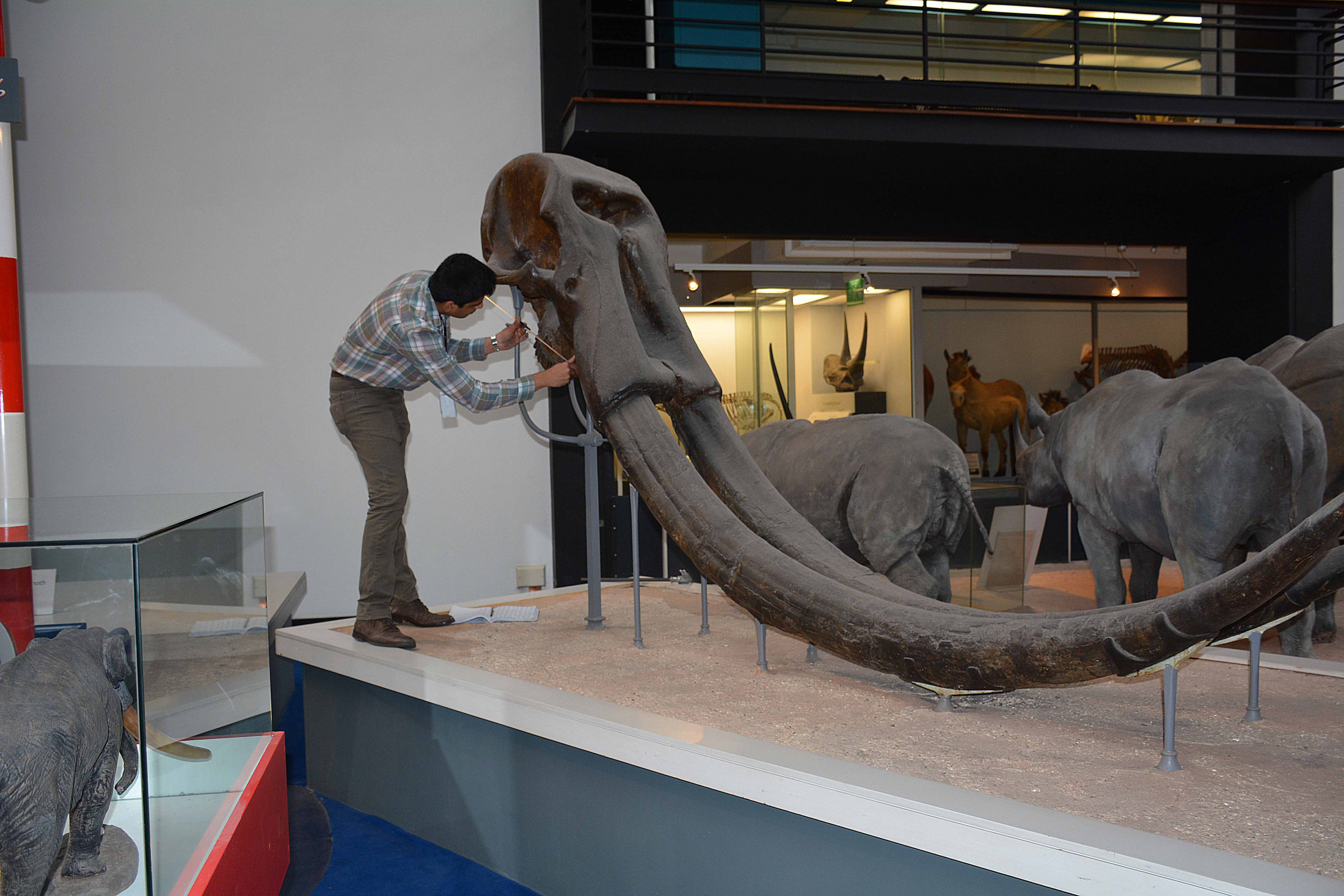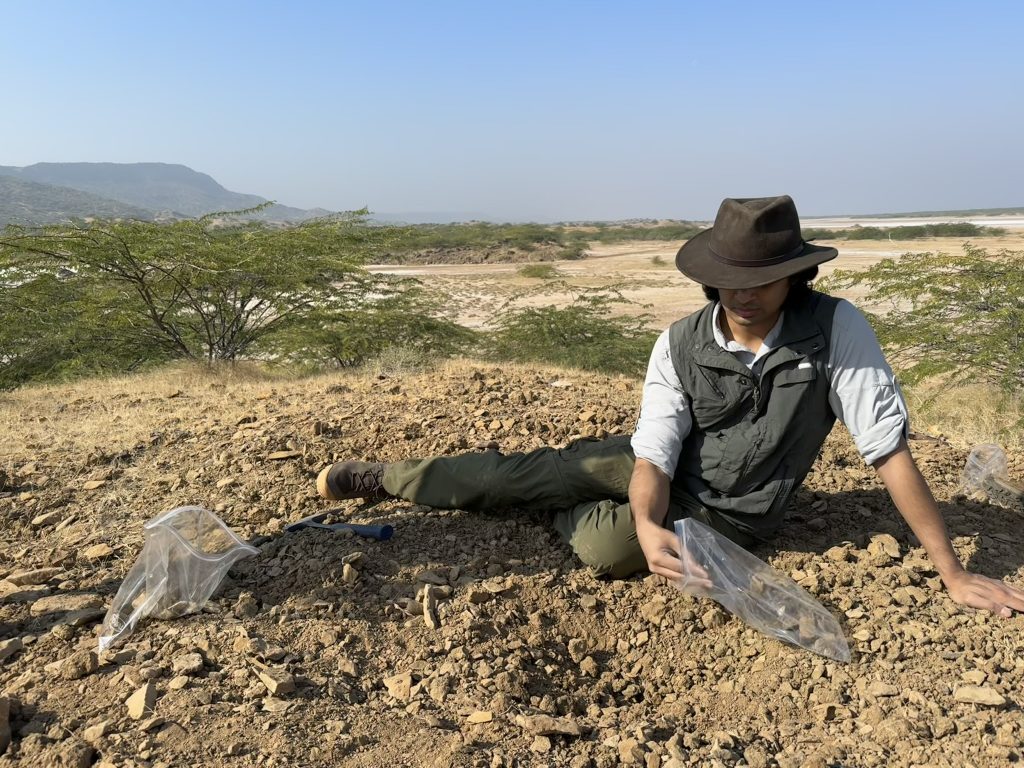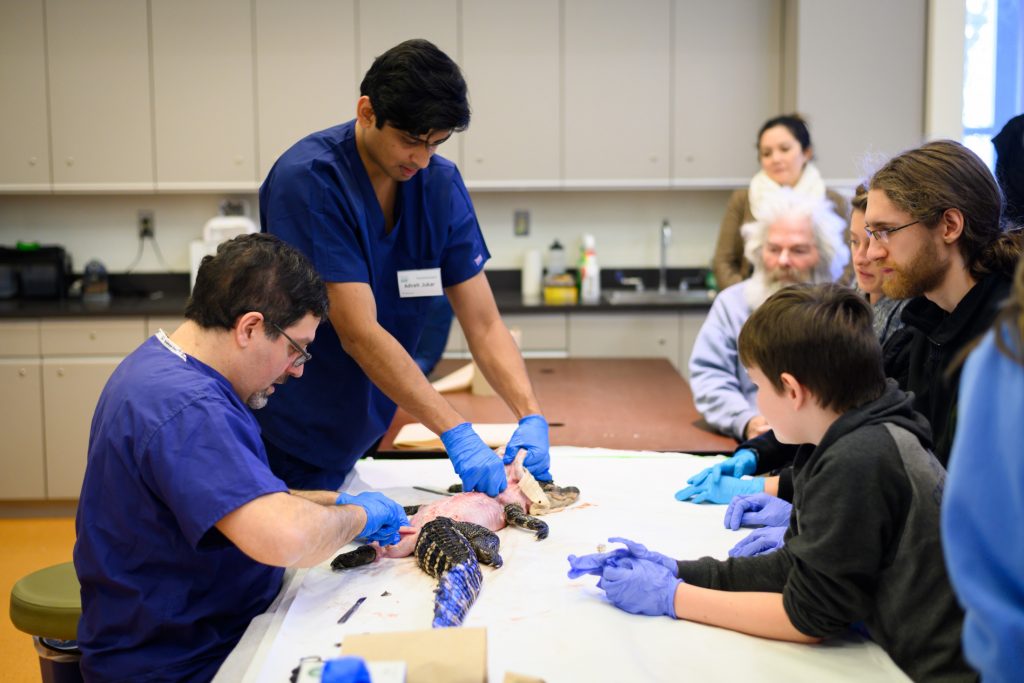The Florida Museum of Natural History welcomes Advait Jukar as its newest curator of vertebrate paleontology. He replaces curator emeritus Bruce MacFadden, who worked in the position for 47 years before retiring last month.
Jukar primarily studies the fossils of large mammals that went extinct after the origin of modern humans. Although he ended up squarely in paleontology, Jukar took a circuitous academic path to get there.
“I’ve gone through phases where I was interested in everything from fish to dinosaurs, plants and shells. I even dabbled in Egyptology when I was a kid,” he said.
Jukar grew up in Mumbai, India, where his parents helped nurture his interest in natural history. One of his fondest memories is listening to his father reading the World Book Encyclopedia and being thrilled when they reached the letter F, which was his favorite because it contained the section on fish.
In 2007, he was accepted to Reed College in Portland, Oregon, and traveled to the U.S. for the first time. Every course at Reed had a research component, and Jukar quickly found himself working in a herpetology lab, which eventually led to his first peer-reviewed scientific publication.
Later, a course in Cambrian zoology and a friendly staff member added fuel to what had been a lambent fascination with paleontology.
“The developmental biology professor was also interested in dinosaurs and fossils, and he said, ‘This is the one chance that you will get to really follow your passion, and it would be a terrible tragedy if you squandered that.’”
Emboldened, Jukar applied for graduate programs in paleontology and accepted an offer from Marshall University in West Virginia. But this proved to be a formidable hiccup in his early career. For a number of reasons, he reconsidered his paleontology aspirations.
He enrolled in a graduate program at George Mason University in Virginia, where he studied under Tom Lovejoy, best known for coining the term “biodiversity” and for his many contributions to the field of conservation science. While there, Jukar studied the ecology of Caribbean coral reefs and how they were being affected by climate change.
But paleontology lingered in this back of his mind, and a casual conversation with a curator at the Smithsonian Institution finally cinched his ambitions. The topic of conversation turned to fossils from India, which Jukar assumed were scarce, given how little research had been done on the topic. He was surprised to learn that India played a significant role in the early development of paleontology, but most of its fossils had been exported from the country and had gone unstudied for years.
“Some of the earliest dinosaurs were found by East India Co. officers and then by officers of the Geological Survey of India,” he said. “People earned medals for the fossils found in the Siwalik Hills.”
Later, Jukar put a substantial amount of effort into tracking down these fossils and using them to piece together the prehistoric history of India. Some, like a trove of fossils collected in the 19th century from the Siwalik Hills of northern India, had been scientifically neglected. In other cases, limited information on where the fossils were originally collected hindered the types of research that could be done with him. He’s helped track down that information as well, including the time he carried out archival research in support of an expedition to Tibet. There, researchers successfully obtained precise coordinates for the location of a batch of fossils had been unearthed 200 years earlier.
Jukar has worked as a Deep Time Peter Buck postdoctoral fellow at the Smithsonian, where he got his first taste of museum outreach and education. When the COVID-19 pandemic later restricted his ability to conduct field work during a second postdoc at Yale, he spent the extra time in the Peabody Museum.
“This was great for me, because they essentially conscripted me to be a curator there and develop my own gallery.”

Photo courtesy of Advait Jukar
Before joining the Florida Museum, Jukar taught at the University of Arizona in the same department that paleontology luminaries George Gaylord Simpson and Paul Martin once worked. At the Florida Museum, he plans to continue his research on South Asian fossils and expand his focus to include extinct fauna of the Southeast United States.
After years of chasing the advice of a college professor, he’s glad to have found a career working in a collection.
“I think there’s a specific kind of person who ends up at a museum, people who love cataloging and curating things, people who love identifying things, and I’ve kind of always been that way. And so being in a museum has always felt like home to me.”
Source: Advait Jukar, advaitjukar@ufl.edu
Media contact: Jerald Pinson, jpinson@floridamuseum.ufl.edu, 352-294-0452

